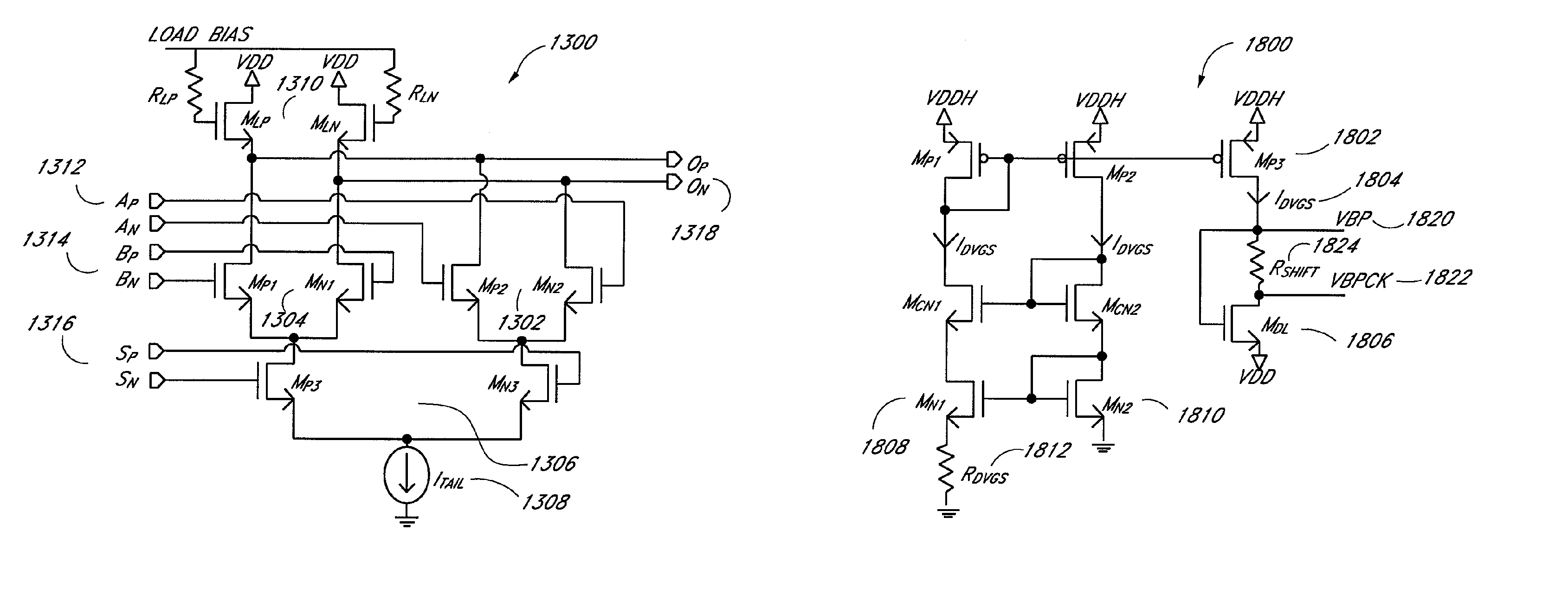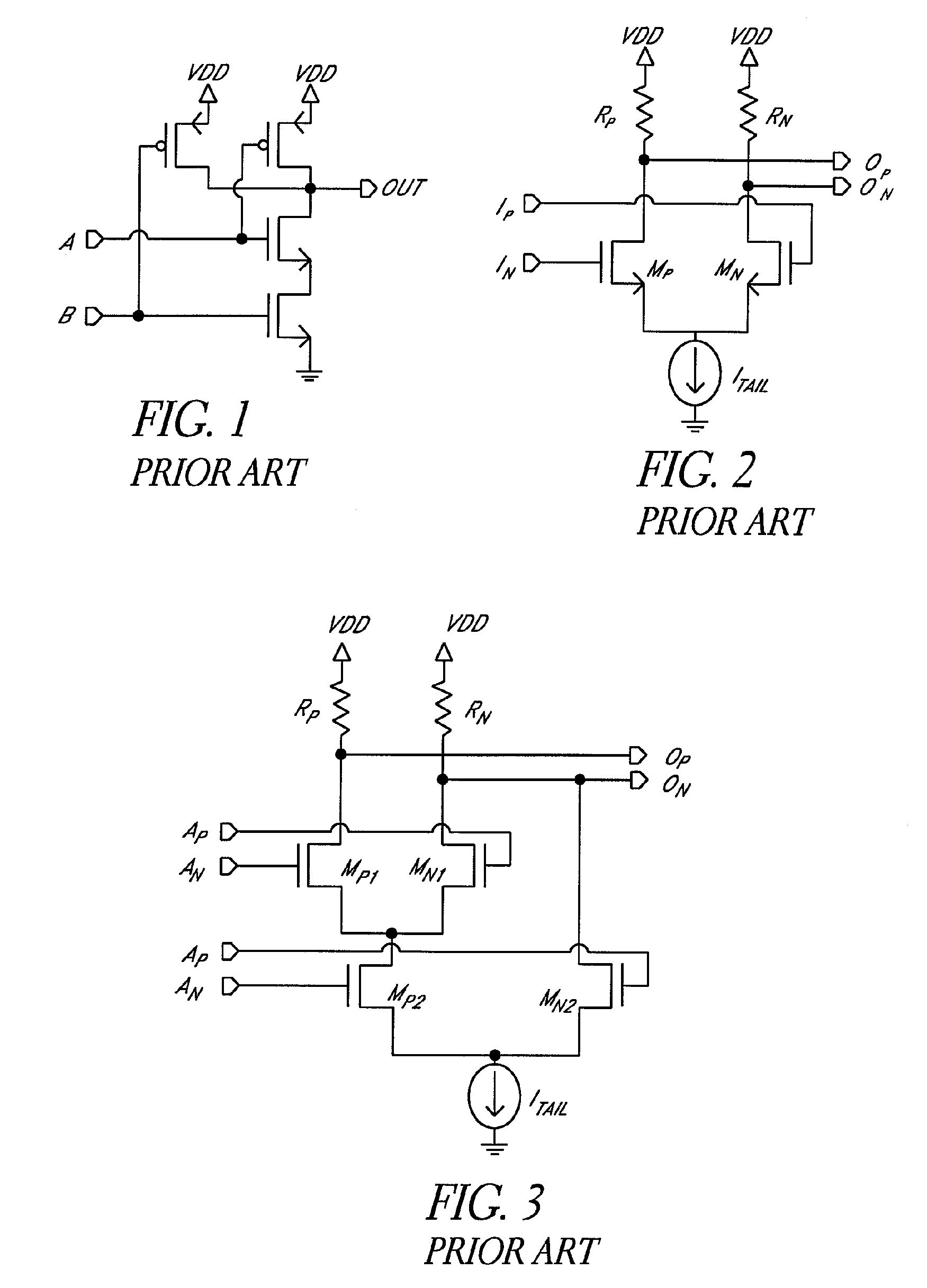Systems and methods for actively-peaked current-mode logic
a current-mode logic and active-peaked technology, applied in the field of circuits, can solve the problems of low integration level, high power consumption of bipolar designs, and low level of integration, and achieve the highest integration level, less cost, and low power consumption.
- Summary
- Abstract
- Description
- Claims
- Application Information
AI Technical Summary
Benefits of technology
Problems solved by technology
Method used
Image
Examples
Embodiment Construction
Introduction and Overview
[0080]FIG. 8 illustrates one embodiment of a structure for an actively-peaked current mode logic buffer 800. This logic buffer 800 can be compared with the conventional devices described earlier in connection with FIG. 2 and FIG. 5. As with the conventional devices, a current source 802 drives a differential pair 804, 806. However, the actively-peaked current mode logic buffer 800 is loaded with NMOS transistors 808, 810 with resistors 812, 814 in series with the gates and a special bias 816 for the gates of the NMOS device loads. These NMOS loads 808, 810 are configured in a voltage follower mode that have particular benefits to a high-speed logic family.
[0081]These NMOS device loads 808, 810 can be combined to create many different logic structures. These logic structures include an “OR” gate, an “AND” gate, a Mux, and a D-type flip flop. These structures can be created using a combination of differential pairs with the NMOS voltage follower load.
[0082]The...
PUM
 Login to View More
Login to View More Abstract
Description
Claims
Application Information
 Login to View More
Login to View More - R&D
- Intellectual Property
- Life Sciences
- Materials
- Tech Scout
- Unparalleled Data Quality
- Higher Quality Content
- 60% Fewer Hallucinations
Browse by: Latest US Patents, China's latest patents, Technical Efficacy Thesaurus, Application Domain, Technology Topic, Popular Technical Reports.
© 2025 PatSnap. All rights reserved.Legal|Privacy policy|Modern Slavery Act Transparency Statement|Sitemap|About US| Contact US: help@patsnap.com



